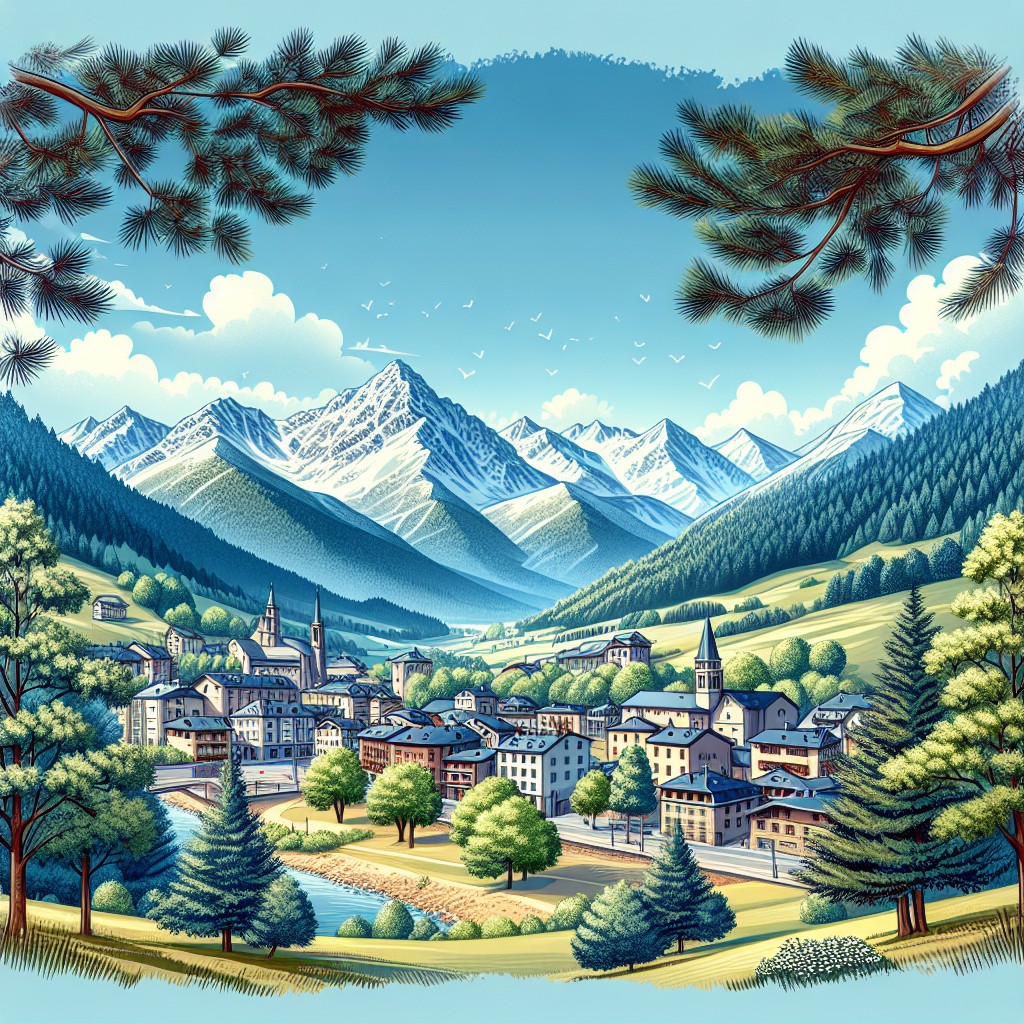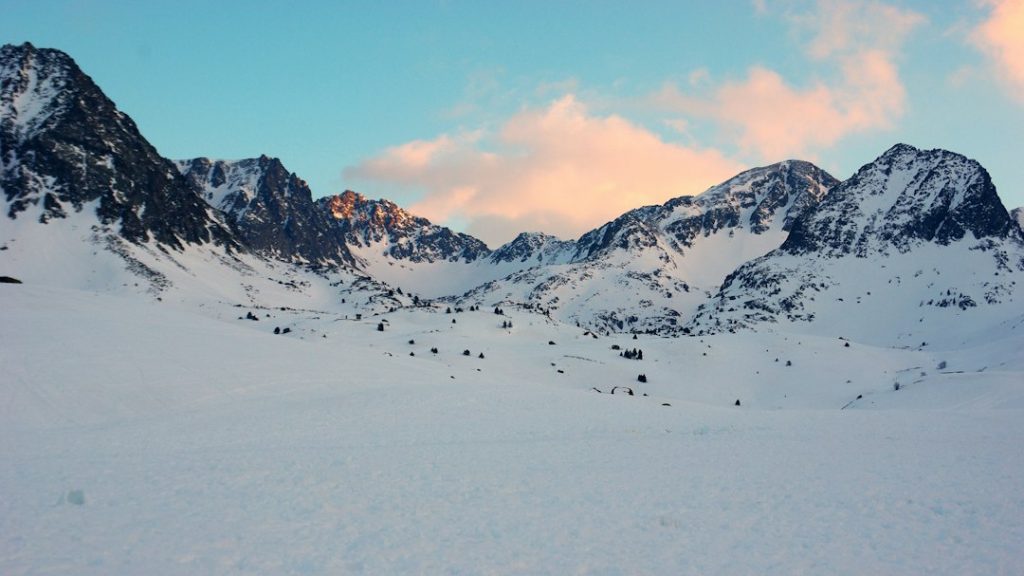Andorra, officially known as the Principality of Andorra, is a small landlocked country located in the eastern Pyrenees mountains between France and Spain. With an area of just 468 square kilometers, it is one of the smallest countries in Europe. Despite its small size, Andorra has a unique population density that sets it apart from other countries.
Population density refers to the number of people living in a given area, usually measured in terms of persons per square kilometer. It is an important indicator of how crowded or sparsely populated an area is. In the case of Andorra, its population density is relatively low compared to other European countries due to its small size and mountainous terrain.
Summary
- Andorra has a small population of around 77,000 people, making it one of the smallest countries in Europe.
- The population density of Andorra has fluctuated throughout history, with periods of growth and decline.
- Factors influencing population density in Andorra include geography, economic development, and immigration policies.
- Andorra has a relatively young population, with a high proportion of foreign-born residents.
- Urbanization has led to increased population density in Andorra’s urban areas, while rural areas have experienced depopulation.
Historical Overview of Andorra’s Population Density
Throughout history, Andorra’s population has experienced fluctuations due to various factors. In the early 20th century, the country had a relatively small population, with only a few thousand inhabitants. However, with the advent of tourism in the mid-20th century, Andorra experienced a significant increase in population.
The growth in population was mainly driven by economic opportunities offered by the tourism industry. The country’s tax haven status and duty-free shopping attracted visitors from neighboring countries, leading to an influx of tourists and seasonal workers. As a result, the population grew rapidly, reaching its peak in the late 20th century.
However, in recent years, Andorra has seen a decline in population due to various factors. The economic recession in Europe and stricter immigration policies have led to a decrease in the number of foreign workers and residents. Additionally, young people are increasingly leaving the country in search of better job opportunities and higher education abroad. These factors have contributed to a decline in population density in Andorra.
Factors influencing Population Density in Andorra
Several factors influence population density in Andorra, including geographic features, economic opportunities, and government policies.
Geographically, Andorra’s mountainous terrain limits the amount of habitable land available for settlement. The majority of the population is concentrated in the valleys and lower elevations, where agricultural activities are possible. This uneven distribution of population contributes to variations in population density across the country.
Economic opportunities also play a significant role in determining population density. The tourism industry has been a major driver of population growth in Andorra, attracting both tourists and seasonal workers. The country’s tax haven status and duty-free shopping have created employment opportunities in the retail and hospitality sectors. However, economic downturns and changes in government policies can lead to fluctuations in population density.
Government policies also influence population density in Andorra. The country has implemented strict immigration policies to control population growth and maintain its unique cultural identity. These policies have made it difficult for foreigners to obtain residency or citizenship, leading to a decline in the number of foreign residents. Additionally, the government has implemented measures to promote sustainable development and protect the environment, which can impact population density.
Demographic Profile of Andorra
The demographic profile of Andorra is characterized by a relatively young population with a balanced gender distribution. According to the latest available data, the median age in Andorra is around 40 years, indicating a relatively youthful population compared to other European countries.
In terms of gender distribution, there is a relatively equal number of males and females in Andorra. This balanced gender ratio is partly due to the country’s small population size and limited immigration.
Ethnically, Andorra is predominantly composed of Andorrans, who are descendants of the original settlers from Catalonia and other parts of Spain. However, due to its status as a tax haven and tourist destination, Andorra has attracted a diverse range of nationalities over the years. Foreign residents make up a significant portion of the population, contributing to its cultural diversity.
Urbanization and its effect on Population Density in Andorra
Andorra has experienced significant urbanization in recent decades, with the growth of urban areas contributing to changes in population density. The capital city, Andorra la Vella, is the largest urban center in the country and serves as the economic and administrative hub.
The growth of urban areas has led to an increase in population density in these areas. As more people migrate to urban centers in search of employment and better living conditions, the population becomes more concentrated, resulting in higher population density.
However, it is important to note that despite urbanization, Andorra’s overall population density remains relatively low due to its small size and mountainous terrain. The majority of the country’s land remains sparsely populated, with only a few densely populated urban areas.
Rural-Urban Migration and Population Density in Andorra
Rural-urban migration has been a significant factor influencing population density in Andorra. Many young people from rural areas have been migrating to urban centers in search of better job opportunities and higher education.
The reasons for rural-urban migration in Andorra are similar to those in other countries. Limited economic opportunities and access to services in rural areas push young people to move to cities where there are more job prospects and better educational facilities. This migration has contributed to an increase in population density in urban areas while leading to a decline in rural population.
Economic Development and Population Density in Andorra
There is a close relationship between economic development and population density in Andorra. The growth of the tourism industry has been a major driver of population growth, attracting both tourists and seasonal workers.
The influx of tourists and seasonal workers has led to an increase in population density, particularly in urban areas. The demand for housing, infrastructure, and services has increased as a result, putting pressure on the limited resources available.
However, economic downturns can also have an impact on population density. During periods of economic recession, there may be a decline in the number of tourists and seasonal workers, leading to a decrease in population density.
Impacts of Population Density on Andorra’s Environment
Population density can have significant impacts on the environment in Andorra. The pressure on natural resources, such as water and land, increases as the population grows and becomes more concentrated in urban areas.
The demand for housing and infrastructure leads to the conversion of agricultural land and natural habitats into built-up areas. This can result in the loss of biodiversity and fragmentation of ecosystems.
Population density also contributes to pollution, particularly in urban areas. Increased vehicular traffic, industrial activities, and waste generation can lead to air and water pollution, impacting both human health and the environment.
Future Population Projections and Density in Andorra
Population projections for Andorra indicate a relatively stable population size in the coming years. The country’s small size and limited economic opportunities are expected to continue to limit population growth.
However, there may be changes in population density due to factors such as rural-urban migration and changes in government policies. The decline in the number of young people and the aging population may also have implications for population density.
Challenges and Opportunities for Managing Andorra’s Population Density
Managing population density in Andorra presents both challenges and opportunities. The country’s small size and limited resources make it important to ensure sustainable development and environmental protection.
Challenges include balancing economic growth with environmental conservation, managing urbanization to prevent overcrowding, and addressing the needs of an aging population. It is crucial for the government to implement policies that promote sustainable development, protect natural resources, and provide equal opportunities for all residents.
Opportunities for managing population density include diversifying the economy to reduce dependence on tourism, promoting rural development to reduce rural-urban migration, and investing in education and healthcare to meet the needs of the population.
In conclusion, Andorra’s population density is influenced by various factors, including geographic features, economic opportunities, and government policies. The country’s unique demographic profile, urbanization trends, and environmental impacts all contribute to the challenges and opportunities in managing population density. By adopting sustainable development practices and protecting the environment, Andorra can ensure a balanced and prosperous future for its population.
FAQs
What is the population density of Andorra?
The population density of Andorra is approximately 179 people per square kilometer.
What is the total population of Andorra?
As of 2021, the total population of Andorra is estimated to be around 77,000 people.
What is the land area of Andorra?
Andorra has a land area of approximately 468 square kilometers.
What is the capital city of Andorra?
The capital city of Andorra is Andorra la Vella.
What is the official language of Andorra?
The official language of Andorra is Catalan.
What is the currency used in Andorra?
The currency used in Andorra is the Euro.
What is the main religion in Andorra?
The main religion in Andorra is Roman Catholicism.
What is the life expectancy in Andorra?
As of 2021, the life expectancy in Andorra is approximately 83 years.
What is the literacy rate in Andorra?
The literacy rate in Andorra is estimated to be around 100%.


